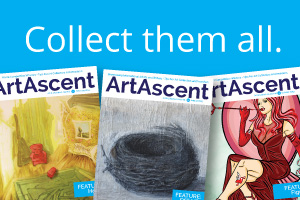How to determine if your art collection is appreciating in value
Everyone wants to keep an eye on their investments, ensure that their portfolio is growing and make adjustments as needed. This is as true of investment in art as it is of investment in stocks, bonds, precious metals and real estate. Keeping track of where you stand as an investor in art involves periodic reference to sales in the art market.
Because the quantity of transactions in the buying and selling of art are considerably less than those in financial instruments, pricing is less volatile. Art is a long-term investment. Nevertheless, it is advisable for the serious investor in art to keep an eye on the market. This will not only allow you to manage the insurance on your assets, but will also indicate when it is time to dispose of works that are underperforming or have reached a fair market value where they can be liquidated to your advantage.
To check the current value of your assets in art, you can refer to public sales of equivalent works at auction houses. There is no guarantee that your well-chosen sculpture by Ai Weiwei, Jeff Koons or Rodin will fetch top price at auction, but you can, through study of sales, get an approximate retail price. Remember that you have to subtract the cost of disposition – an auction house seller’s fee – from this to determine the actual value of your art asset. By analyzing auction prices, you will be able to determine which of the pieces in your collection have declined in value or are not rising in value at a rate that you expect. You can take appropriate action to dispose of these works and acquire others with more potential. You can access several sources of auction sales records on the Internet. Some are free and some charge a subscription fee. For living artists, the most useful and accurate source of information on the retail price of their work is through their dealers. Try to attend all the dealer shows of artists in your collection and see how their work is stylistically evolving and consider the current prices being asked for their work.
Depending on the size of your collection, it may be worth considering having it professionally evaluated periodically. This will give you an approximate value of your assets and can be used to satisfy the needs of your insurer. The accuracy of an evaluation depends on the skill of the evaluator. Because evaluators in many jurisdictions are unlicensed, you will have to exercise care in choosing one. Ask for advice from commercial and not-for-profit galleries and weigh what you are told carefully before proceeding.
The only certain way to determine the value of a work of art in your collection is to offer to sell it to another collector or dealer or place it in an art auction. Before contracting to sell an artwork at auction, you should be given an estimate of the sale price. Be aware of the fact that this is an estimate only, and that the auction house has a vested interest in including your work in a sale. Based on this you, can choose to proceed with the sale and, if you want, protect your investment by setting a minimum bid. You can check the estimates provided by auction houses by having a look at their sales records. Compare the estimated prices with the winning bids. This often yields sobering results. In using any of these means of determining the value of an artwork by actually disposing of it, always keep in mind the complimentary adage to “buyer beware,” that is: “seller beware.”
The value of your investment in art will, in the best of all possible worlds, slowly increase. This is particularly true for the work of contemporary emerging artists where patience is necessary. Remember that only a few artists achieve such acclaim that the prices for their work rise astronomically. It is your job as a collector for investment purposes to find the new Damien Hirst, Michael Snow or Andy Warhol and acquire their works in the early stages of their careers. Even if you don’t manage this, a small increase in value over a number of pieces in your collection will be rewarding. Through infrequent evaluations, either informal ones you make yourself or ones provided by professionals, you will be able to keep an eye on the approximate value of your collection and weed it accordingly.
By Dr. Alan McNairn







